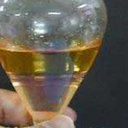Food proteins from different allergen families sensitize Balb/c mice to family-specific immune responses.
キーワード
概要
The classification of food allergens based on the structure and function of proteins contributes to the study of the relationship between bioinformatics and potential allergenicity of allergens. Food allergens always share sequence similarity with the allergens in the same allergen families. For that reason, food proteins from different allergen families may induce different patterns of immune responses in animal models. Female Balb/c mice (3-4-weeks-old) were sensitized with food proteins once per week for 4 weeks, and then challenged 2 weeks later (on Day 42 of study). Blood was collected (to obtain serum levels of histamine and protein-specific IgG1 and IgE antibodies) and measures of vascular permeability were performed 20 min after the challenge. Five food proteins (11S globulin, OVA [ovalbumin], HAS [human serum albumin] and LRP [lysine-responsive storage protein] of different allergen families, and Cry 1Ab/Ac [crystal protein]) were used to assess patterns of immune responses for each allergen family and then bioinformatics and digestive stability in simulated gastric fluid were employed to assess the overall utility of the Balb/c. The assay results indicated that, in this model, histamine and protein-specific IgE antibody levels and vascular permeability could be used to identify allergenicity of 11S globulin, OVA, and PAP (potato acid phosphatase) only. However, the results of the protein-specific IgG1 measures could only distinguish allergic food proteins with negative control. Based on bioinformatic analyses, the five different food proteins clearly induced distinct patterns of immune responses in the Balb/c model.



